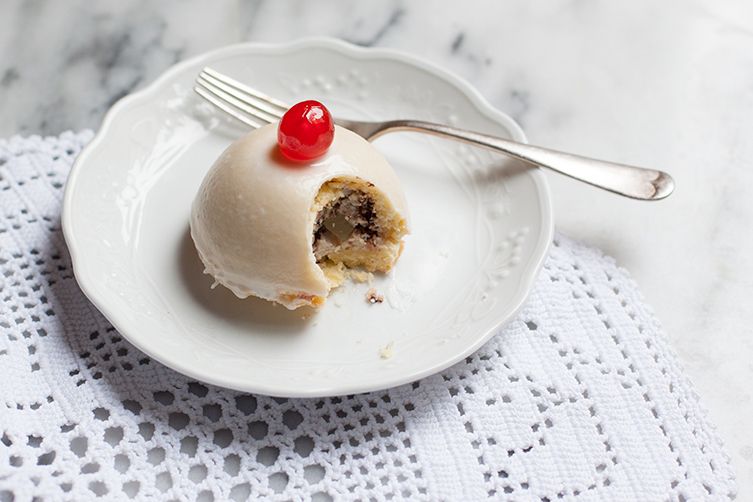If you've ever studied art history, you'll know how to easily spot Saint Agatha in a fresco painting: She's the one holding her breasts on a platter, a hint of the legend behind her torturous martyrdom in which they were cut off.
According to one of the popular stories, Agatha, a fifteen-year old girl born into a noble Sicilian family, not only refused to give up her faith but refused the advances of a Roman proconsul and died from her wounds in her prison cell on February 5, the year 251 A.D.

This third century saint is bound to the Sicilian city of Catania. Not only is she the patron saint, said to protect the city from volcanic eruptions from nearby Mount Etna, but it is also the place where she died and is buried.
Every year, her life is celebrated by the people of Catania in a centuries-old festival between February 3 and 5 with an enormous, all-night procession that draws hundreds of thousands of people to the city.
During this time of year, you can be sure that every pastry shop in Catania will be proudly selling their famous treats dedicated to their beloved Saint Agatha: minne, also known as cassatelle (minnuzzi or cassateddi in dialect), pretty and delicate little pastries made in the form of, well, breasts. They're symbols of the city, of Saint Agatha, and also of all Sicilian women—feminine, strong, and proud.


The direct relatives of Sicily's elaborate ricotta dessert cassata, minne are a smaller version: perfectly round and covered with a thick, white glaze and a bright red candied cherry glimmering from the top.
This variation, which you can think of as miniature chocolate chip-ricotta pies with icing, is simple to make at home: Sweet, buttery shortcrust pastries are filled with a cassata-esque ricotta and chocolate filling, then baked in the oven and glazed. There are also the versions made exactly like a miniature cassata, where liquor-soaked sponge takes the place of the shortcrust pastry. Once the sponge is filled, the little desserts are frozen, then covered in green and white marzipan, topped with a cherry, and left to come back to room temperature to be served.

Either way, if you want to do it right, make sure you choose the best ricotta you can get. And don't worry: These aren't as fiddly as they may look. Saint Agatha will make sure they come out perfectly. After all, Sicilians also consider her the patron saint of bakers (as well as bell-ringers and breast cancer patients).

Minne di Sant'Agata
Makes 6
For the filling and decoration:
1 1/4 cups (10 1/2 ounces or 300 grams) fresh ricotta (sheep milk, preferably)
1 1/4 cups (160 grams) confectioners' sugar, divided
1 1/2 ounces (40 grams) dark chocolate, chopped finely (or chips)
1 ounce (30 grams) candied citron or orange, chopped finely
1 egg white (use the one leftover from making the dough)
1 tablespoon lemon juice
6 candied cherries
For the pastry dough:
2 cups (250 grams) flour
1/2 cup (100 grams) sugar
1/2 cup plus 1 tablespoon (125 grams) cold butter, chopped
1 whole egg (60-gram egg or U.S. large size eggs)
1 egg yolk (save the white for the glaze)
See the full recipe (and save and print it) here.
Photos by Emiko Davies






See what other Food52 readers are saying.